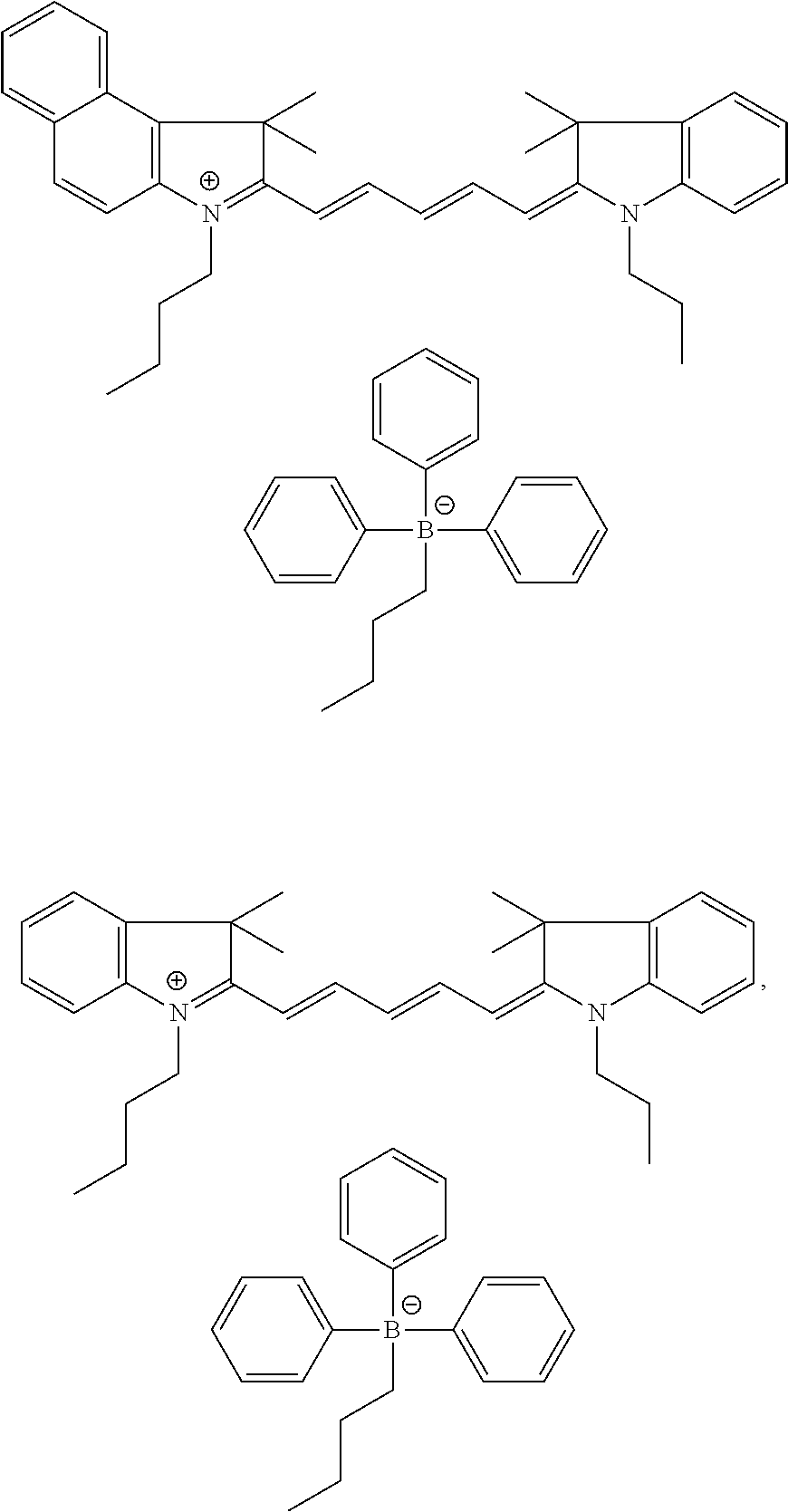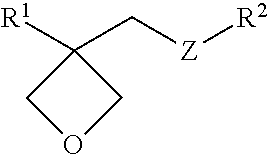Low-viscosity liquid radiation curable dental aligner mold resin compositions for additive manufacturing
a technology of liquid radiation curable resin and additive manufacturing, which is applied in the direction of dental surgery, dental tools, othrodontics, etc., can solve the problems of excess heat generation, reduced curing amount during object creation, and limited output power of additives
- Summary
- Abstract
- Description
- Claims
- Application Information
AI Technical Summary
Benefits of technology
Problems solved by technology
Method used
Image
Examples
examples
[0185]These examples illustrate embodiments of the liquid radiation curable resins for additive manufacturing of the instant invention. Table 1 describes the various components of the liquid radiation curable resins for additive manufacturing used in the present examples.
TABLE 1Function inComponentFormulaChemical DescriptorSupplierChivacureCationicA mixture of: bis[4-Chitec1176Photoinitiatordiphenylsulfoniumphenyl]sulfidebishexafluoroantimonate;thiophenoxyphenylsulfoniumhexafluoroantimonate and propylenecarbonate.EPON 825CationicBisphenol A diglycidyl etherMomentivePolymerizablecompoundIrgacureRadical1-Hydroxy-1-cyclohexyl phenyl ketoneBASF184PhotoinitiatorIrganoxStabilizerThiodiethylene bis(3,5-di-tert-butyl-4-BASF1035hydroxyhydrocinnamate)Longnox 10StabilizerNeopentanetetrayl 3,5-di-tert-butyl-4-BASFhydroxyhydrocinnamateOXT-101Cationic3-Ethyl-3-oxetanemethanolToagoseiPolymerizableCompoundPVPStabilizerPolyvinylpyrrolidoneVariousSR-399LV,RadicalDipentaerythritolSartomerJPolymerizabl...
examples 7-14
[0194]Various liquid radiation curable resins for additive manufacturing were prepared according to well-known methods in the art, by employing varying amounts of known viscosity stabilizers. Only Example 7 included no stabilizer component. These samples were tested according to the methods for viscosity stability, as detailed above, after 1, 6, and 11 days. The results are presented in Table 4.
TABLE 3Values are listed in parts by weightComponentChemicalEx. 7Ex. 8Ex. 9Ex. 10ChivacureArylsulfonium2642642642641176hexafluoroantimonatecationic inititiator 50%in propylene carbonateEPON 825Bisphenol A diglycidyl ether1762.11762.11762.11762.1IRGACUREa-Hydroxycyclohexyl phenyl224224224224184ketoneOXT-1013-Hydroxymethyl-3-ethyloxetane1252.81252.81252.81252.8SR 399Dipentaerythritol880880880880pentaacrylateCelloxide3,4-Epoxycyclohexylmethyl36223622362236222021P3′,4′-epoxycyclohexanecarboxylatePVPpoly vinyl pyrrolidone0.00500.00500.0050longnox 10Neopentanetetrayl 3,5-di-tert-0.9960.51butyl-4-hy...
PUM
| Property | Measurement | Unit |
|---|---|---|
| Tg | aaaaa | aaaaa |
| Tg | aaaaa | aaaaa |
| wavelength | aaaaa | aaaaa |
Abstract
Description
Claims
Application Information
 Login to View More
Login to View More - R&D
- Intellectual Property
- Life Sciences
- Materials
- Tech Scout
- Unparalleled Data Quality
- Higher Quality Content
- 60% Fewer Hallucinations
Browse by: Latest US Patents, China's latest patents, Technical Efficacy Thesaurus, Application Domain, Technology Topic, Popular Technical Reports.
© 2025 PatSnap. All rights reserved.Legal|Privacy policy|Modern Slavery Act Transparency Statement|Sitemap|About US| Contact US: help@patsnap.com



